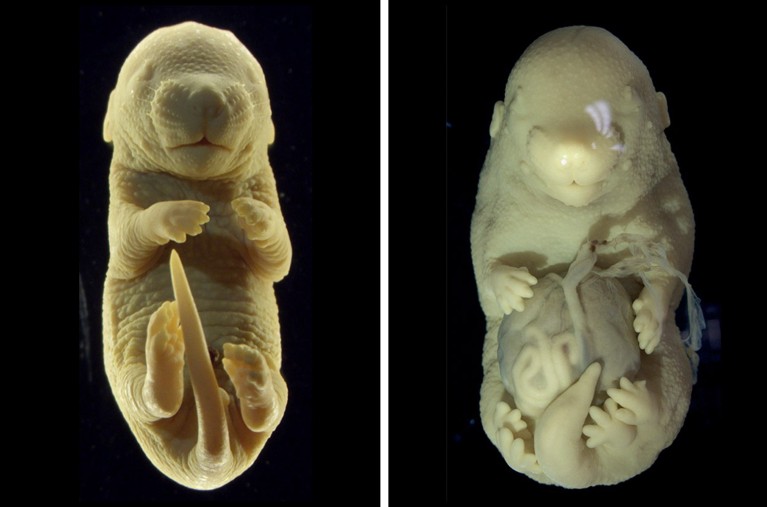- NEWS
Scientists made a six-legged mouse embryo — here’s why

A typical mouse embryo (left) has four limbs. An embryo in which a particular gene was switched off halfway through development has six limbs, and several of its internal organs protrude from its abdomen. Credit: Anastasiia Lozovska et al/Nat. Comms
Access options
Access Nature and 54 other Nature Portfolio journals
Get Nature+, our best-value online-access subscription
$29.99 / 30 days
cancel any time
Subscribe to this journal
Receive 51 print issues and online access
$199.00 per year
only $3.90 per issue
Rent or buy this article
Prices vary by article type
from$1.95
to$39.95
Prices may be subject to local taxes which are calculated during checkout
Nature 628, 247 (2024)
doi: https://doi.org/10.1038/d41586-024-00943-7
References
Lozovska, A. et al. Nature Commun. https://doi.org/10.1038/s41467-024-46870-z (2024).

 The next frontier for human embryo research
The next frontier for human embryo research
 Mouse embryos grown without eggs or sperm: why, and what’s next?
Mouse embryos grown without eggs or sperm: why, and what’s next?
 The secret forces that squeeze and pull life into shape
The secret forces that squeeze and pull life into shape







